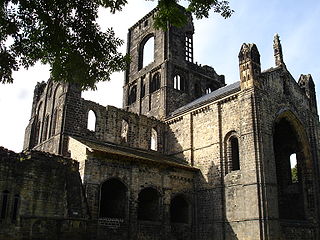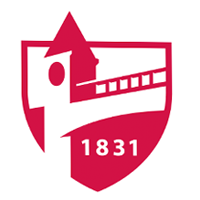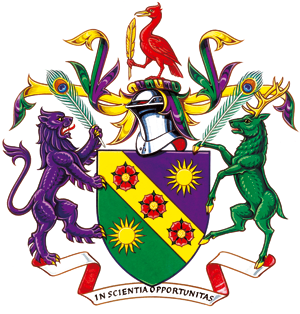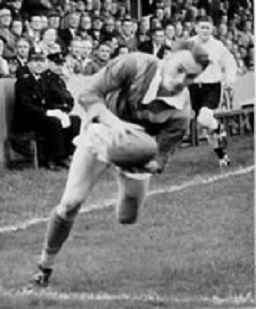
Kirkstall is a north-western suburb of Leeds, West Yorkshire, England, on the eastern side of the River Aire. The area sits in the Kirkstall ward of Leeds City Council and Leeds Central and Headingley parliamentary constituency, represented by Alex Sobel. The population of the ward at the 2011 Census was 21,709.
Leeds is a major town in West Yorkshire, England.

Headingley is a suburb of Leeds, West Yorkshire, England, approximately two miles out of the city centre, to the north west along the A660 road. Headingley is the location of the Beckett Park campus of Leeds Beckett University and Headingley Stadium.

Leeds Beckett University (LBU), formerly known as Leeds Metropolitan University (LMU) and before that as Leeds Polytechnic, is a public university in Leeds, West Yorkshire, England. It has campuses in the city centre and Headingley. The university's origins can be traced to 1824, with the foundation of the Leeds Mechanics Institute. Leeds Polytechnic was formed in 1970, and was part of the Leeds Local Education Authority until it became an independent Higher Education Corporation on 1 April 1989. In 1992, the institution gained university status. The current name was adopted in September 2014.

LaGrange College is a private college in LaGrange, Georgia. Founded in 1831 as a female educational institution, LaGrange is the oldest private college in Georgia. It is affiliated with the United Methodist Church and offers more than 55 academic and pre-professional programs, including graduate degrees in education.

Bretton Hall College of Education was a higher education college in West Bretton in the West Riding of Yorkshire, England. It opened as a teacher training college in 1949 with awards from the University of Leeds. The college merged with the University of Leeds in 2001 and the campus closed in 2007.

Headingley Stadium is a stadium complex in Headingley, Leeds, West Yorkshire, England. Linked by a two-sided stand housing common facilities, it comprises the two following separate grounds: Headingley Cricket Ground and Headingley Rugby Stadium.

The University of Chichester is a public university located in West Sussex, England, which became a university in 2005. Campuses are based in the city of Chichester and the nearby coastal resort of Bognor Regis and an associate campus for commercial music on the Isle of Wight.

Edge Hill University is a campus-based public university in Ormskirk, Lancashire, England. The university, which originally opened in 1885 as Edge Hill College, was the first non-denominational teacher training college for women in England, before admitting its first male students in 1959. In 2005, Edge Hill was granted Taught Degree Awarding Powers by the Privy Council and became Edge Hill University on 18 May 2006.

Kirkstall Brewery is a complex of Grade II listed buildings built in the 19th century on either side of the Leeds and Liverpool Canal.

Burley is an inner city area of Leeds, West Yorkshire, England, 1 mile (1.6 km) north-west of Leeds city centre, between the A65 Kirkstall Road at the south and Headingley at the north, in the Kirkstall ward.

Beckett Park is a residential area and a large public park in Leeds, West Yorkshire, England. It is in the Weetwood ward of Leeds City Council. It borders onto Headingley, West Park and Kirkstall. It is named after Ernest Beckett, 2nd Baron Grimthorpe.
William Beckett was an English Conservative politician
The Champion Colleges is a rugby league football competition administered by the University and College Rugby League.

The architecture of Leeds, a city and metropolitan borough in West Yorkshire, England, encompasses a wide range of architectural styles and notable buildings. As with most northern industrial centres, much of Leeds' prominent architecture is of the Victorian era. However, the City of Leeds also contains buildings from as early as the Middle Ages such as Kirkstall Abbey, one of Britain's best preserved ruined Cistercian monasteries, as well as examples of 20th century industrial architecture, particularly in the districts of Hunslet and Holbeck.

John Garry Hemingway was an English rugby union, and professional rugby league footballer who played in the 1950s and 1960s. He played representative level rugby union (RU) for Yorkshire and Sheffield and South Yorkshire, and at club level Old Thornensians RUFC, as a wing, and club level rugby league (RL) for Leeds, as a wing.

The Didsbury Campus on Wilmslow Road, Didsbury, Manchester, England, originally a private estate, was part of the Manchester Metropolitan University; the oldest building on the site dated to around 1785. It became a theological college for the Wesleyan Methodist Church in 1842, about the same time as a chapel which later became part of the college was built. These buildings are now all listed.
Leeds is known for its culture in the fields of art, architecture, music, sport, film and television. As the largest city in Yorkshire, Leeds is a centre of Yorkshire's contemporary culture and is the base for Yorkshire's television and regional newspapers.

Dunfermline College of Physical Education, was a college for training teachers of physical education and hygiene in Scotland. The college was established in Dunfermline in 1905, moved to Aberdeen in 1950, and merged with Moray House College of Education, University of Edinburgh, in 1987.

The Hostel of the Resurrection also known as the Priory of St Wilfred and later as the Adult Education Centre at the University of Leeds is a former student hostel in Leeds. A designated Grade II* listed building in Leeds, West Yorkshire, England, the building is now privately owned and is again student accommodation.


















